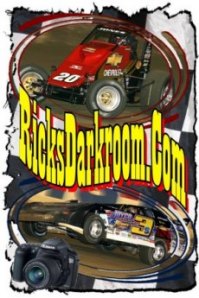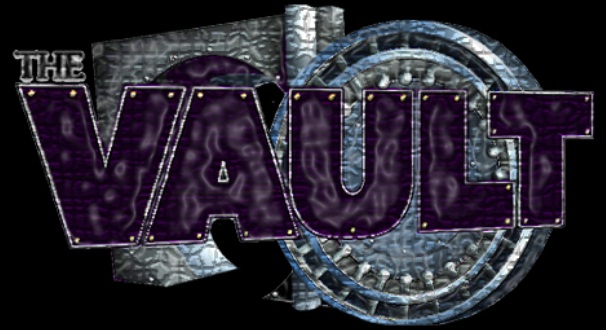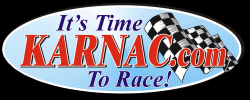Someone told me not that long ago that I know very little about racing. Well, I know a lot more than I used to know, but I still have plenty to learn. You see, as far as stock car racing is concerned, I sort of grew up with a silver spoon in my mouth, and yet I failed to comprehend that which was right in my face. I didn’t grow up in a racing family, and quite honestly my parents thought it was a wasteful and childish sort of sport.
Still I managed to connect with people who exposed me to the speed, the noise, and the excitement, and I became somewhat hooked on those things. But no one ever taught me anything about how all of that came to be, about where stock car racing came from and where it was hopefully going, and about the names, events, and places, that all come together to make racing what it is today.
Racing has a deep and colored history, and until you understand and appreciate that history, you can never really fully comprehend the full picture of this sport and know what it truly is.
Beginnings
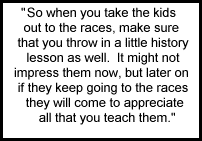 My first live contact with racing happened at the Piedmont Interstate Fairgrounds in Spartanburg, South Carolina. In those days there was a Saturday afternoon race each October at the fairgrounds dirt track while the fair was in town, and I wound up sitting in the grandstands and watching the show. Drivers brought their cars from many local speedways and raced that afternoon, and I remember that one driver hit the guardrail and flipped his car, causing a lengthy delay. Other than that the only details I remember were that it was loud and dusty and you could feel the rumble of the cars in your chest.
My first live contact with racing happened at the Piedmont Interstate Fairgrounds in Spartanburg, South Carolina. In those days there was a Saturday afternoon race each October at the fairgrounds dirt track while the fair was in town, and I wound up sitting in the grandstands and watching the show. Drivers brought their cars from many local speedways and raced that afternoon, and I remember that one driver hit the guardrail and flipped his car, causing a lengthy delay. Other than that the only details I remember were that it was loud and dusty and you could feel the rumble of the cars in your chest.
There was all sorts of beating and banging going on, and in the end somebody won the heat races and the main event, although I probably couldn’t have told you who ten minutes after it was over. I was captivated by the sounds, the smells , and the speed, and I especially liked to see cars get smashed up. I wasn’t turned into a race fan at that point in time, but I knew that I had found something very exciting.
It was not too long after that when a friend of mine from my neighborhood mentioned that he had an uncle who raced each week, and invited me to go and see him that Saturday night. As it turned out, the track was the famed Greenville-Pickens Speedway outside of Easley, SC. To me it was just another race track because I wasn’t told any of the history behind the place.
Today I know that history and the long list of famous names who raced there since Bill France Sr opened it in 1946, like Buck Baker, Lee Petty, and Ralph Earnhardt. I saw those names posted there but they didn’t mean anything to me at the time. It was my first experience with seeing stock car racing on a paved track, and it looked faster, it sounded louder, and it was every bit as exciting to me as the dirt track racing had been. There was some wrecking that went on that night, including one driver who had a very nasty meeting with the wall on the frontstretch, but I remember most was getting to meet my friend’s uncle and see his car up close after racing ended.
If I wasn’t totally hooked before I was now, and I went back many times over the next three or four years when my friend’s family ventured out to see his uncle race. We even went to a couple of races at Hickory, North Carolina. Seems like I remember some dude named Jarrett that was big at that place. They sure talked about him enough!
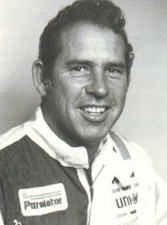 I tried more than once to get my family to take me to see some racing but there was no way that was going to happen. Instead I managed to go with various friends and their families when I got the chance, and that is how I went to see my first NASCAR race at Charlotte when I was in high school. Some family friends owned a local restaurant and it became a favorite lunchtime hangout of our local NASCAR legend, David Pearson.
I tried more than once to get my family to take me to see some racing but there was no way that was going to happen. Instead I managed to go with various friends and their families when I got the chance, and that is how I went to see my first NASCAR race at Charlotte when I was in high school. Some family friends owned a local restaurant and it became a favorite lunchtime hangout of our local NASCAR legend, David Pearson.
As I remember it, Pearson gave the family infield passes to the World 600 at Charlotte and I was asked to go along. All I can say to that experience was that it was amazing. Pearson was involved in a late race mishap and Darrell Waltrip drove his Gatoraide machine to the win, and I was able to be within a few yards of the victory lane celebration looking through the chain link fence. I really had no clue who Darrell Waltrip was. All I knew was that he beat Pearson and that sort of ticked me off.
And getting back to David Pearson, when he ate lunch at my friends’ restaurant he always sat at a table that was located next the counter where the cash register was. And because I knew the owners I got to sit there too, and would try to listen to the conversation just to absorb as much stuff as I could. Usually the conversation was about hunting or fishing and not racing, but I listened anyway. Honestly, I know I spoke to the man and he spoke to me, but none of that is in my memory. I guess at the time it didn’t have enough significance for me to file it in a place marked, “Do NOT delete!”
Later On
It was after that race in Charlotte I discovered that Bud Moore’s shop was located on a side street not far from where I lived. Up until this point I had never really looked at the small brick building down next to the railroad tracks behind Beaumont Mill, but once I got a peek inside I was thrilled to see several #15 Winston Cup cars all parked side by side. It was next to impossible to get inside that place but I managed to talk my way in once or twice, and I made it a point to keep track of when they were loading up the hauler outside next to the building, getting ready to go racing.
I met Dale Earnhardt there once, and I talked to Bud Moore a couple of times too. And I also discovered Cotton Owens Enterprises which looked like a junkyard full of Chrysler products, but that harbored a metal building full of race cars of all shapes and sizes, plus photos, trophies, and a lot more. And just a few miles away in Inman there was James Hylton’s shop as well, turning out even more race cars.
And as time went on I met others who hooked me up with opportunities to see racing at places like Darlington, Bristol, North Wilkesboro, and Atlanta. I also went to some local tracks as well, but I was getting older and new things were complicating my life. As we grow older we change as we mature. Responsibilities got in my way thanks to college, work, and a new distraction I had discovered called radio.
I became a radio personality at a local AM station and lost my connection with racing. My only racing experience through those years of my life came from covering sports and helping to host a sports talk show from time to time. Beyond that my interest in racing became dormant. Instead of venturing out to a local short track I would be in Clemson at a football, basketball, or baseball game. I never rekindled my love of racing until I moved to Florida with my current wife and family and found Ocala Speedway, and now that I’m here I couldn’t be happier. But then I look back and take a look at where I have been and wish I had known better.
The Rearview Mirror
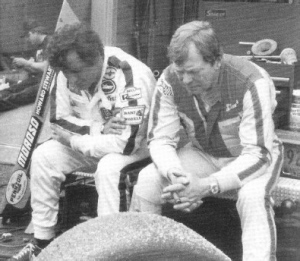 Looking back on my childhood, growing up where I did, and being exposed to the things around me, I had zero concept of the value of those experiences. I was living right in the very cradle of NASCAR before the focus shifted 70 miles up the road to Charlotte and Concord, and I had no clue. Today I look back on all of that I and I feel like a fool for not taking advantage of those opportunities more than I did.
Looking back on my childhood, growing up where I did, and being exposed to the things around me, I had zero concept of the value of those experiences. I was living right in the very cradle of NASCAR before the focus shifted 70 miles up the road to Charlotte and Concord, and I had no clue. Today I look back on all of that I and I feel like a fool for not taking advantage of those opportunities more than I did.
Perhaps it was my youth that kept me from being impressed, or maybe it was the fact that I always was around that stuff so it didn’t seem too special. Whatever it was, looking back now I realize that I was one lucky kid, and if I could go back in time I’d definitely do things differently! It’s too late now to do it over again, so I’ll cherish the memories and go on. But every now and again I still kick myself, just for the heck of it.
And that brings me to something that is as much a part of stock car racing as drivers, cars, and speed, and that is history and heritage. Growing up in the 1970’s in the upstate of South Carolina I was surrounded by NASCAR and racing, and yet I understood little of it. Today, with maturity on my side and an appreciation of the sport, I look back and think about squandered opportunities and such.
Seriously, how many people would have paid big bucks to have lunch with David Pearson? It cost me the price of the meal, which was probably around $4, and I wasn’t the least bit in awe. Why? Because I didn’t understand who that man was or grasp the concept of what he did. And why was that? Because no one taught me! He was race car driver to me and that’s it. Today I understand that he is one of the best to ever race, and his rivalry with Richard Petty has never been matched again.
Honestly, you have no idea what I’d give to have those lunches at L&J’s Restaurant back again. That is because with knowledge I have come to better appreciate the heritage of racing. It’s not all about speed, money, sponsorships, and big names. It’s also about history and tradition too!
In order to appreciate those aspects of our sport you must first be educated about them, and today it amazes me how many race fans and participants do not understand the history behind the sport. When we teach our sons and daughters to go fast and turn left, we also need to make sure that they respect and know those who came before them, including the local heroes and not just the Pettys, Pearsons, Waltrips, Earnhardts, Bakers, and Allisons.
We also need to be sure that their understanding of history includes places and events too. Perhaps if there was more knowledge of the history surrounding many of the older race tracks then maybe there would be more of an appreciation for them and more of an effort to keep them? Perhaps not, but at least knowing what you are losing is worth something.
Today and Tomorrow
All of us should understand that the roots of racing are in the local short tracks all over America. Some are full of history and have aided talented youngsters along their way to the NASCAR circuit, while others are newer and may be harboring the stars of tomorrow. The roots of our sport are also in the people who build race cars and who climb into them each week to race, and their fathers who taught them how to build those cars and make them go fast.
People, places, and events, all are part of the history that makes racing what it is, and in order for the next generation to appreciate all of it we must be willing to teach them about it while they are still young. Let them grow up with a deeper appreciation for why the sport is what it is along with learning the ability to drive a race car or build an engine.
Racing is a great sport, and one can enjoy it without understanding the history behind it. But without the knowledge of that history, the appreciation of what racing really is cannot go very deep. To truly love the sport requires us to know that history, make sure that our kids know it as well, and work toward preserving the traditions and locations that came together to create modern stock car racing as we know it today. Some folks believe that ignorance is bliss, but I don’t see it that way. Ignorance deprived me of the appreciation of events at the time that I lived them, but with knowledge I can appreciate the memories and cherish them until I die.
So when you take the kids out to the races, make sure that you throw in a little history lesson as well. It might not impress them now, but later on if they keep going to the races they will come to appreciate all that you teach them. Even if it is just the history of the track where you race or go to watch racing, please make sure that the next generation has an appreciation of those who came before, what they accomplished, and where they accomplished it.
Racing is excitement, noise, speed, and courage, but it is also so much more! It is the sum of all of the history, all of the personalities, all of the records, achievements, and traditions, that come together to create what we have today.
Without all of that, racing is just racing.
-BJ CAVIN currently announces and writes for Ocala Speedway in Florida. His personal blog is on MySpace. His Column, “A Closer Look with BJ Cavin” appears on Real Racin USA each Tuesday.


